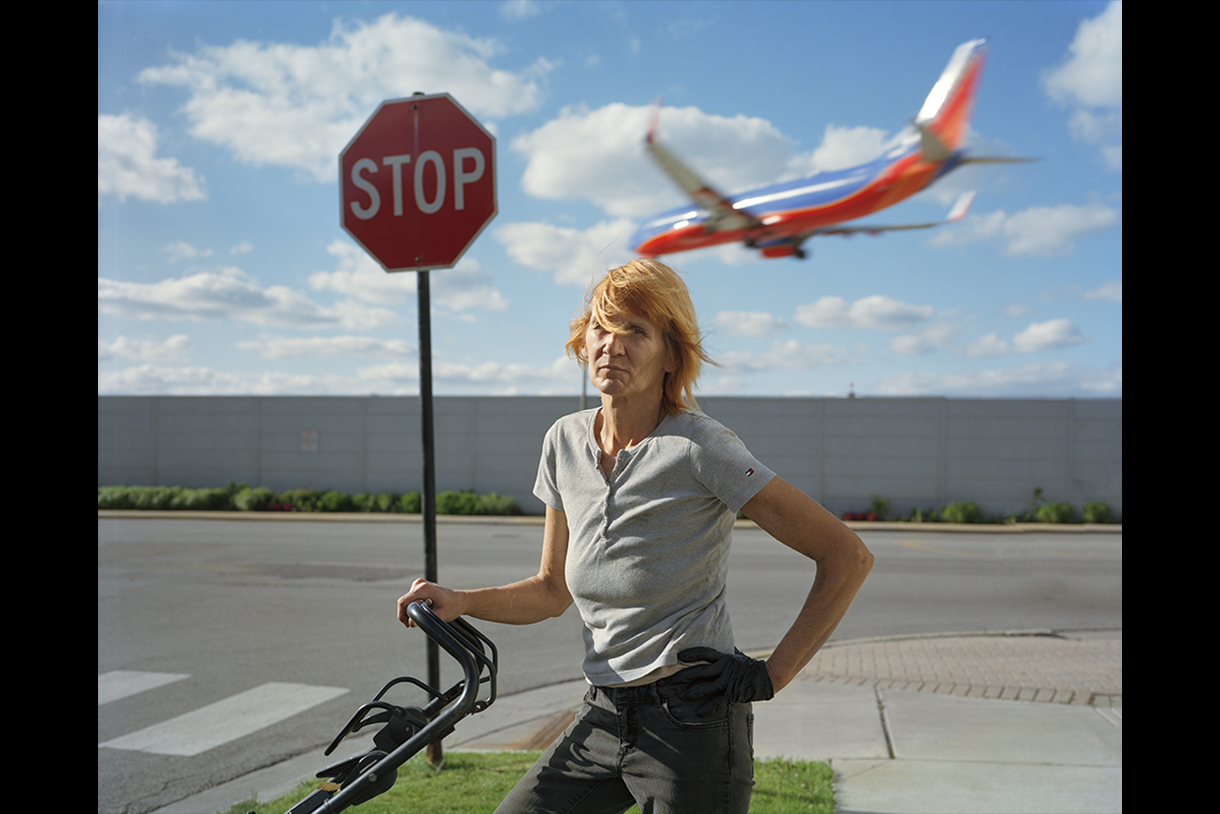Paul D’Amato on the Best Color Photography Darkroom in Chicago, Teaching at Columbia, and his Midway Project
Paul D’Amato has been a fan of visual art as long as he can remember, and that interest has been made apparent through his chosen career path. In this feature, the Columbia College Chicago Professor of Photography who has been at Columbia since 2001 gives us insight on his appreciation for his craft, his view of the challenges in the field, and a peek into his most recent undertaking—a photography project featuring the neighborhoods surrounding Chicago’s Midway Airport.

Photo of Paul D'Amato by Kelli Connell
When did you first become interested in visual art?
As long as I can remember. We had art books in the house, a tattered copy of the Family of Man and my father’s framed photographs on the walls. I spent most every service staring at the Tiffany-stained glass windows in our local Unitarian church. That’s all I remember from going to church.
Why did you choose Columbia College Chicago?
I have had two involvements with Columbia. First, as a part time faculty member right out of graduate school when the only way one could print color photographs was in a color darkroom. Columbia had the best color darkroom in the city and still does. And secondly, when I was hired back as a tenured faculty member after teaching in Maine for 13 years. Then the draw was the opportunity to be part of one of the most celebrated photography departments in the country and to be a photographer in the city of Chicago on weekly basis instead of just the summer as I did when living and teaching in Maine for those intervening years.
What is your experience in the field? How do you bring your experiences into the classroom?
My experience is the field—the world—and most of what I know comes from being actively and consistently engaged in it. That has led to a number of fellowships, exhibitions, and four monographs with a fifth one on the way.
Columbia used to market itself by saying come to a school where you will be taught by professionals in their field. It was a message that made clear that instructors at Columbia talked the talk because they walked the walk—that what you learned there could be taken right from the classroom into the workplace. It’s an elegant idea—that if you are passionate about what you do as a professional, then you will be passionate about talking about it to students.
Can you tell me about your project at Midway?
I am finishing and am in the process of distilling the project into a book. This is from the introduction:
“The first interstate, I-70, and the first McDonalds began in 1956. Since then—as long as I’ve been alive—there’s been a relentless flattening of the cultural landscape. Interstates, strip malls, and every manner of commercial franchise have reached into all corners of American life. Everywhere is now looking more like everywhere else.
Midway is one such place. The heart of it is Midway Airport in Chicago, one of the few airports in the United States embedded within a residential area of a city. Though all working class, the Midway community is difficult to define and routinely ignored by everyone going to the airport to fly to places that are far more exotic. Just about every ethnic group in the city lives here against a backdrop of strip malls, fast food, motels, light industry, shipping, and transportation. Everyone is midway between urban and suburban—between immigration and assimilation—all striving to be somewhere else; although very few have flown on the jets that make their dishes rattle every seven minutes.”
What do you believe the greatest challenge of working as a photographer is today? How have you approached overcoming those challenges?
The simple answer is the camera phone and how good it gets every year, and Instagram. And, as usual, the growth of technology is far ahead of our understanding of its implications. The challenge for educators is processing what the ease and quality of this technology means for the photography curriculum. Fifty years ago, John Szarkowski said that “there are now more photographs in the world than bricks.” That seems quaint now.
Personally, I’ve always accepted that photography is a consequence of the industrial revolution and just because that technology has accelerated doesn’t change my relationship to the medium and the way it allows me to interface and understand the world I live in. In short, my approach throughout has been to not overreact to any this and to understand that there are more important things involved in what I do than the technology of how I do it.
Are you currently working on any other projects?
I have a lot of images over the last six years for my latest project. Turning that into a book takes years to do well. In the meantime, I have been baiting creative hooks. We’ll see.
What advice do you have for students interested in pursuing photography as a career?
There are just so many ways of being a photographer, so the word “career” has many different meanings and manifestations. None of these ways of working has a clear roadmap for success. My advice would be that no matter how you choose to be involved in the field, make sure you love that way of working. Let finding meaning and pleasure in what you do guide you through the curriculum and into the world.
Recent News
- Columbia Holds Sixth Annual Hip-Hop Festival
- 5 Questions with Columbia Alum and Trustee Staci R. Collins Jackson
- Anchor and Reporter Paige Barnes ’21 Found Stories Worth Telling at Columbia
- Make Columbia Part of Your Holiday Season: Watch Alum Movies and Shows
- Fashion Design Alum Shaquita Reed ’18 Expresses Herself Using Different Mediums


